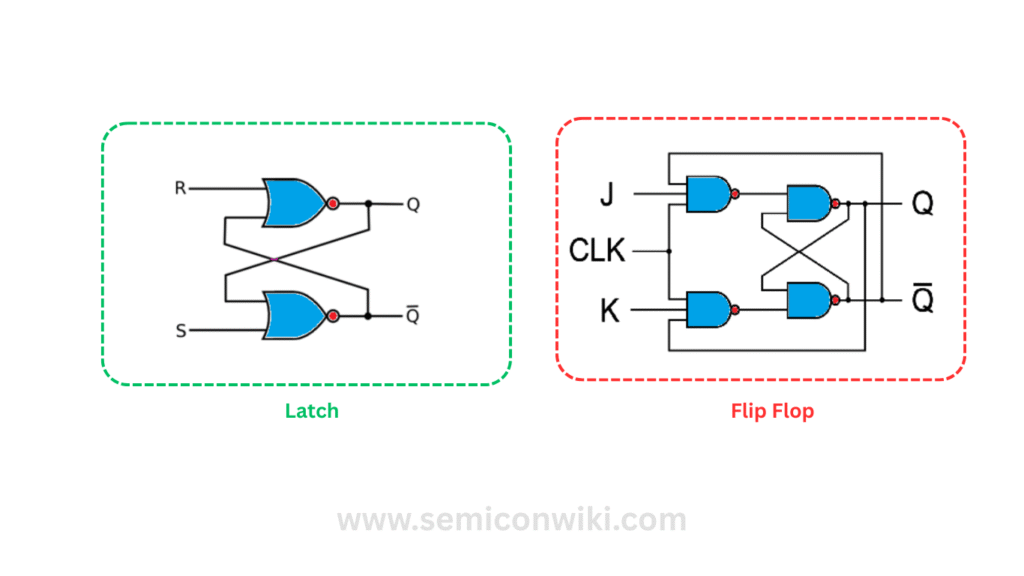The Difference Between a Latch and Flip Flop is, Latch circuits respond to input levels directly; they are level-triggered, so their output changes as soon as a specific input level is present. Flip-flops, in contrast, are edge-triggered, which means they only update their output when there is a transition in the clock signal, either on the rising or falling edge.

What is Flip-Flop?
A flip-flop is an edge-triggered type of memory circuit, meaning you and I can control its output only when the clock signal changes. It checks the inputs continuously, but the output updates only at the moment of a clock transition—usually on the rising or falling edge.
What is Latch?
A latch is a level-triggered memory circuit, meaning it changes its output as soon as the input changes, without waiting for a clock signal. You and I can think of it as a basic memory device with two stable states—“set” and “reset”—and two outputs. The state of the latch depends on the input signal combination, and it holds that state until new inputs arrive.
Difference Between Latch and Flip Flop
| Parameter | Latch | Flip-Flop |
|---|---|---|
| Input and Output | The latch responds to the changes in inputs continuously as soon as it checks the inputs. | A flip-flop checks the inputs. It only changes the output at times defined by any control signal like the clock signal. |
| Sensitivity | Latches are sensitive to the applied input signal only when enabled. | Flip-flop is sensitive to the applied input and the clock signal. |
| Operating Speed | It has comparatively fast operating speed. | It has a slow operating speed. |
| Power Requirement | It requires comparatively less power. | It requires more power. |
| Area Required | It requires comparatively less area. | It requires more area. |
| Robustness | Latches are comparatively less robust. | Flip-flops are comparatively more robust. |
| Classification | A user cannot classify the latch this way. | You can classify a flip-flop into a synchronous or asynchronous flip-flop. |
| Working | Latches operate only using binary inputs. | Flip-flops work using the binary input and the clock signal. |
| Dependency of Operation | The operation depends on the present and past input along with the past output binary values. | The operation relies on the present and past input bits along with the past output and clock pulses. |
| Type of Operation Performed | Latch performs asynchronous operations. | Flip-flop performs synchronous operations. |
| Analysis of Circuit | Analyzing the circuit is quite complex. | It is quite easy to perform circuit analysis. |
| Usage as a Register | A latch cannot serve as a register as the register requires further advanced electronic circuits (EC). Time also plays an essential role here. | A flip-flop is capable of working as a register as it contains clock signals in its input. |
| Types | J-K, S-R, D, and T Latches. | J-K, S-R, D, and T Flip-flops. |
| Uses | Users can utilize these for designing sequential circuits. But they are still not generally preferred. | They constitute the building blocks of many sequential circuits such as counters. |
Read also: What Is a D Flip-Flop and How Does It Work?